The East Yorkshire Regiment was the local army regiment, which many Hull men joined and died.
The origins of the East Yorkshire Regiment (The Duke of York’s Own), can be traced back to 1685. During the Great War 1914-1918, The Regiment raised a total of 35 Battalion and fought in the major theatres of war; the Western Front, at Gallipoli, in Macedonia and Egypt. It was also awarded 21 Battle Honours and 4 Victoria Crosses during the course of the war. It lost 403 Officers and 7,080 men. Some 2,910 Hull men died serving with the East Yorkshire Regiments, including 972 in the Hull Pal Battalions. As the war ended, Service Battalions were disbanded and the East Yorkshire Regiment, returned to its two original regular battalions. After the war, the 1st East Yorkshire Regiment, was sent to Ireland, where it remained until 1922. The 2nd East Yorkshire Battalion returned to India, and later served in Basra and Iraq.
Yorkshire as a County raised an army of 400,000 men during the Great War, as many as the whole continent of Australia. Hull supplied 70,000 of these men. The 28 Yorkshire battalions that existed before the war grew into 83 and included 333,000 Yorkshiremen. The Yorkshire battalions suffered 230,000 casualties and earned 35 Victoria Crosses during the First World War. They served in about 27 different Divisions and all theatres of war except Mesopotamia. These figures were given by Field Marshall, William Robertson, DSO, at the unveiling of the Hull Cenotaph on the 20th September 1924. “The total war dead for the East Yorkshire Regiment was 403 officers and 7,080 other ranks, the 1st Battalion incurring the greatest number – 1,536 WOs, NCOs and Men. Four VCs were awarded for which the citations are given. Honours and Awards are listed in three groups: British awards (1,125 in all), Mention in Despatches (397) and Foreign awards (94); The 1st Battalion went to France with 18th Brigade, 6th Division, joining the BEF at the Battle of the Aisne. In November 1915 it was transferred to 64th Brigade, 21st Division with which it remained for the rest of the war on the Western Front. The 2nd Battalion was in India and arrived home in December 1914, joining the newly formed Regular division, the 28th with which it went to France in January 1915. In November the division was transferred to the Macedonian front. The 6th Battalion was the only one to go to Gallipoli, which it did as the Pioneer Battalion of 11th Division. In December 1915 the battalion was evacuated with the division and ended up in France in July 1916. All the other battalions that went on active service fought on the Western Front, three of them – 8th, 12th and 13th were disbanded in February 1918 in the reorganization of the BEF that reduced brigades from four to three battalions.”
In August 1914, the East Yorkshire Regiment (EYR), like most British Infantry regiment had two Regular battalions, (the 1st and 2nd EYR), one stationed at home, the other abroad. It also had a Special Reserve (3rd East Yorkshire Battalion) and two Territorial battalions, (the 4th East Yorkshire and 5th EYR Cyclists Battalion).When war began, there were 66 Regular officers in the East Yorkshire Regiment: two lieutenant-colonels; eight majors; twenty captains; twenty-five lieutenants; and eleven second lieutenants. To these should be added another two second lieutenants who received Regular commissions in August 1914, but after the declaration of war. Both deployed to France in September 1914, but with the 2nd Battalion Duke of Wellington’s Regiment. There were also three Special Reserve officers, all second lieutenants, listed under ‘1st and 2nd Battalions’.
After the outbreak of war, eight Service (Kitchener) battalions were raised (the 6th to 13th East Yorkshire regiments) as well as two Reserve regiments (14th and 15th) and two Garrison battalions (1st and 2nd). The 4th Battalion Territorial Force, formed a second and third line battalion, 2/4th and 3/4th. Ten of the nineteen active battalions went on active service.
Each Battalion consisted of around 1,000 men, divided into 4 Companies of 250 men each. Each Company was again divided into 4 Platoons of around 60 men, and each Platoon was divided into 4 ‘Sections’ of about 15 men. It was amongst these small sections, that most men experienced the war, with their East Yorkshire Regiment.
At the outbreak of war, the 1st East Yorkshire Battalion was posted to France in September 1914 and saw action at the Battle of the Aisne, where it lost 73 men and 8 Officers killed and wounded. The 2nd East Yorkshire Battalion, which was in India at the start of the war, transferred to France in January 1915. In October 1915 the 2nd EYR was then posted to Salonika, where it remained for the rest of the war fighting Bulgarians. The 3rd ‘Special Reserve’ East Yorkshire Battalion was mobilised in Beverley and was used as a training unit, training over 15,600 men during the war. The 3rd Battalion also defended the Holderness coast against potential invasion, with the 5th East Yorkshire Cyclist Battalion. The 4th Territorial Battalion saw service overseas.
When war was declared, the East Yorkshires, raised an additional Eight Service (Kitchener) battalions (numbered the 6th to 13th EYR), as well as two Reserve units (the 14th and 15th battalions), and the 1st and 2nd Garrison battalions. The 6th, 7th & 8th Battalions were formed in Beverley. The 10th, 11th, 12th, 13th & 14th Battalions, were raised in Hull and became known as the ‘Hull Pals’.
Note: Four Hull Pals discuss their recruitment and war experiences here – (3) Facebook
East Yorkshire Battalions during the Great War 1914-1918. Regular Battalions
(Photographs courtesy of Green Howard Museum and this link http://www.ww1-yorkshires.org.uk/html-files/photos-groups.htm)
-
1st EAST YORKSHIRE Battalion. August 1914: stationed in York. Part of the 18th Brigade, 6th Division. Moved on 8 August to Edinburgh, then six days later to Cambridge. Landed at St Nazaire on 10 September 1914. 26 November 1915: transferred to 64th Brigade, 21st Division. Here are more details;-
04.08.1914 Stationed at York as part of the 18th Brigade of the 6th Division.
08.08.1914 Moved to Edinburgh and then to Cambridge.
10.09.1914 Mobilised for war and landed at St. Nazaire. It thus missed the early fighting and the Retreat from Mons. The Battalion’s commanding officer was Lieutenant-Colonel, Robert Erle Benson, who died of wounds, on 29.09.1914, aged 51 and was replaced by Lieutenant-Colonel J.L.J. Clarke. There would be another seven CO’s by the end of the war. Within ten months from the declaration of war, 1st Battalion East Yorkshire Regiment had lost sixteen of its original twenty-five officers, including its CO. Eleven of the original 1st EYR officers were killed in the war. -
The 1st EYR was engaged in various actions on the Western Front including;
During 1914
The actions on the Aisne heights.
During 1915
Battle of Armentières (13 October-2 November), during the so-called ‘race to the sea’. The battle of ‘Hooge’, the site of the notorious German ‘liquid fire’ attack of 9 August 1915.
26.11.1915 Transferred to the 64th Brigade of the 21st Division and continued to engage in various actions on the Western Front including;
During 1916
The Battle of Albert, The Battle of Bazentin Ridge, The Battle of Flers-Courcelette, The Battle of Morval, The Battle of Le Transloy.
During 1917
The German retreat to the Hindenburg Line, The First and Third Battles of the Scarpe, The flanking operations around Bullecourt, The Battle of Polygon Wood, The Battle of Broodseinde, The Second Battle of Passchendaele. The Cambrai Operations.
During 1918
The Battle of St Quentin, The First Battle of Bapaume, The Battle of Messines, The Second Battle of Kemmel, The Battle of the Aisne 1918, The Battle of Albert, The Second Battle of Bapaume, The Battle of Epehy, The Battle of the St Quentin Canal, The Battle of Cambrai 1918, The Battle of the Selle.
11.11.1918 Ended the war in France, Berlaimont. -
2nd EAST YORKSHIRE Battalion.
04.08.1914 Stationed at Kamptee, India at the outbreak of war.
Dec 1914 Returned to England and then moved to Winchester to join the 83rd brigade of the 28th Division.16.01.1915 Mobilised for war and landed at Havre. (Having been rushed from the heat of India to the cold and damp of northern France in the space of a few weeks the battalion experienced considerable problems of adjustment, suffering badly from frostbite). The 2nd EYR was engaged in various actions on the Western front including;
During 1915
22.04.1915 – St Julien (24 April-4 May 1915), on the Frezenberg Ridge (8-13 May 1915) (where it did well), the Bellwaarde Ridge (24 and 25 May 1915) and battle of Loos (27 September-5 October)
26.10.1915 Embarked for Salonika from Marseilles via Alexandria.
03.12.1915 Arrived at Salonika and engaged in various action against the Bulgarian forces including;
During 1916
The occupation of Mazirko, The capture of Barakli Jum’a.
During 1917
The capture of Ferdie and Essex Trenches, The capture of Barakli and Kumli.
During 1918
The Battle of Doiran, The pursuit to the Strumica valley.
30.09.1915 Ended the war in Macedonia, north of Lake Doiran. Below is a photo of the 2nd EYR, in training, 1914.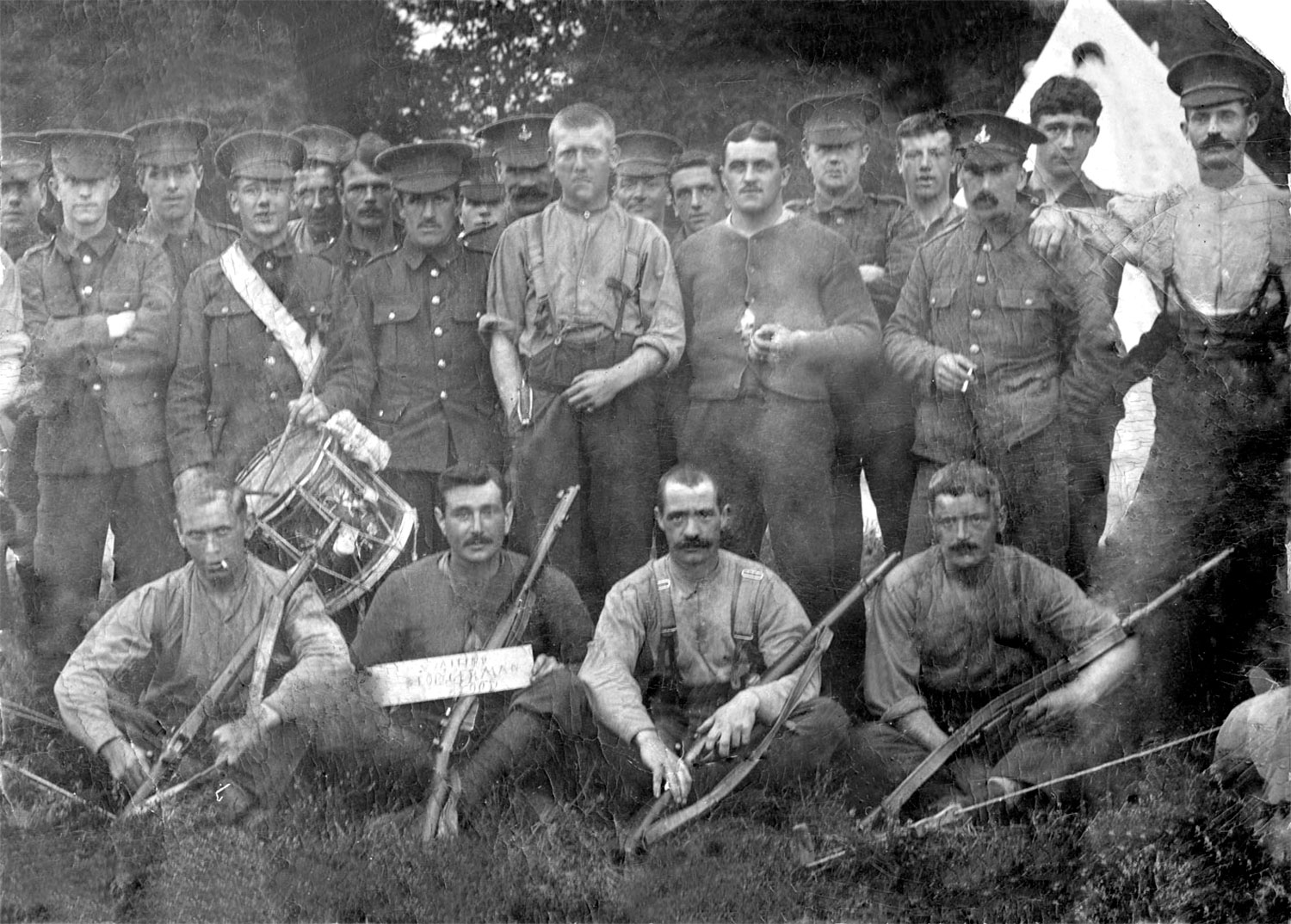
-
3rd EAST YORKSHIRE (Reserve) Battalion (York East Riding Regiment of Militia). Formed August 1914: stationed in Beverley. A training unit, it remained in UK throughout the war. Moved within a few days of declaration of war to Hedon, for duty as the Humber Garrison. Made the short journey in April 1916 to Withernsea, where it remained. Below is a picture of the 3rd EYR, taken early 1917.

-
Territorial Battalions
-
1/4th EAST YORKSHIRE Battalion. Formed August 1914 : in Londesborough Barracks, Hull. Part of the York and Durham Brigade, Northumbrian Division. 17 April 1915 : landed at Boulogne. 12 May 1915 : formation became 150th Brigade, 50th (Northumbrian) Division. 15 July 1918 : reduced to cadre and transferred to Lines of Communication. 16 August 1918 :transferred to 116th Brigade, 39th Division. 7 November 1918 : demobilised in France.
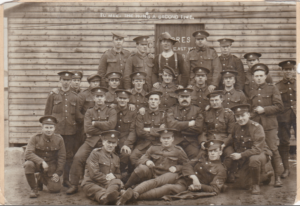
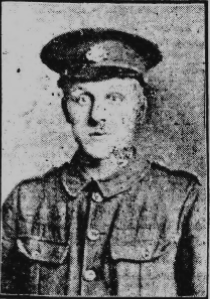
Lance Corporal, Walter Gleadhill, EYR, DCM, MM of 14 Denmark Avenue, Holderness Road - The 4th East Yorkshires. (Picture courtesy of Ken Blackmore)
Here are more details.
-
04.08.1914 Stationed at Hull as part of the York & Durham Brigade of the Northumbrian Division and then moved to South Holderness and then on to Darlington and then Newcastle.
-
07.04.1915 Mobilised for war and landed at Boulogne where the formation became the 150th Brigade of the 50th Division which engaged in various action on the Western Front including;
During 1915
The Battle of St Julien, The Battle of Frezenburg Ridge, The Battle of Bellewaarde Ridge.
During 1916
The Battle of Flers-Courcelette, The Battle of Morval, The Battle of the Transloy Ridges.
During 1917
The First and Second Battles of the Scarpe, The Capture of Wancourt Ridge, The Second Battle of Passchendaele.
During 1918
The Battle of St Quentin, The Actions at the Somme Crossings, The Battle of Rosieres, The Battle of Estaires, The Battle of Hazebrouck, The Battle of the Aisne.
15.07.1918 Reduced to cadre and moved to defend the Lines of Communication in Dieppe.
16.08.1918 Transferred to the 116th Brigade of the 39th Division.
07.11.1918 Demobilised at Cucq. During its service, the 1/4th Battalion lost 939 men of all ranks killed. Below are officers of the 1/4 EYR, taken April 1915.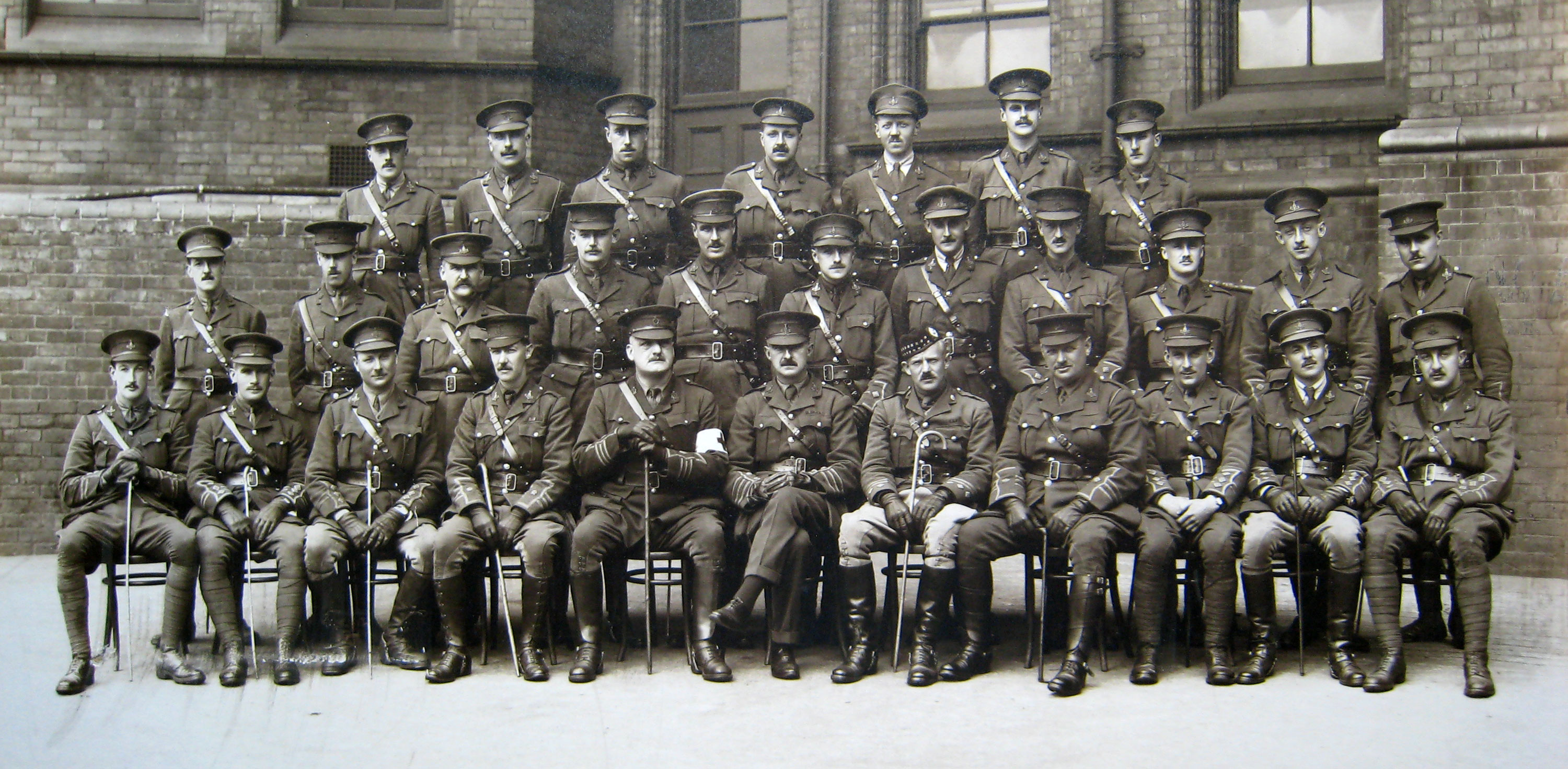
-
2/4th EAST YORKSHIRE Battalion. Formed at Darlington in September 1914 as a second line battalion. Sept 1914 Formed at Darlington and then moved to Hull.
Feb 1915 Returned to Darlington and joined the 189th Brigade of the 63rd Division, then moved to Cramlington near Newcastle and then on to Retford.
July 1916 The Division broken up and the 189th Brigade moved to Catterick.
Nov 1916 Moved to Bermuda where it remained. The battalion returned to the UK in 1919 for demobilisation, and 2/4th Battalion, East Yorkshire Regiment was officially disbanded on 14 February 1920.. Its casualties (24 other ranks) died during the war, were mainly due to the Spanish flu pandemic.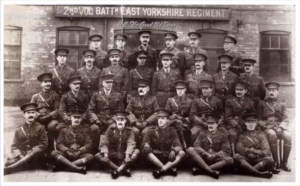
- 2nd Voluntary Battalion East Yorkshire regiment
-
3/4th EAST YORKSHIRE Battalion. Formed at Hull on 19 June 1915, but soon moved to South Dalton. 8 April 1916 : became 4th Reserve Battalion. By September 1916 was at Catterick. In 1917 was at Hornsea and training as many as 3000 men for service overseas. By November 1918 was at South Dalton, part of Humber Garrison. After the Armistice the battalion – still 1800 strong – moved back to Dalton Holme Camp at South Dalton to begin demobilisation. The unit was finally disbanded on 17 April 1919 at Beverley.
-
1/5th (Cyclist) Battalion of EAST YORKSHIRE, was a mobile coastal defence unit of Britain’s Territorial Force. Formed in 1909, it carried out coastal defence work throughout WW1. It contained 8 companies, four based in Hull and one each in Hessle, Howden, Hunmanby and Withernsea. Their role was to use their mobility to defend vulnerable sectors of the coastline and maintain communications between the static defence units. In August 1914, it mobilised under the command of Lieutenant Colonel, Sir Robert Aske, who was a local lawyer and politician. It was based in Park Street, Hull. At first, competition was keen to join the 1/5th Cyclist Battalion, which was seen as rather glamorous, with distinctive knee breeches and black bugle buttons. However, it lost out to the Hull Pal Battalions.
In March 1915, it was designated the 1/5th (Cyclist) Battalion and patrolled the Lincolnshire coast through the winter of 1914–15, day and night, in all weathers. In May 1915, it moved to Withernsea on the Yorkshire coast, and subsequently to Roos, with its companies distributed between Spurn Head and Bridlington. In January 1916, it adopted the modern four-company organisation in place of eight companies, and was allotted to the northern section of the Humber Defences. the 1/5th East Yorkshire Cyclists, remained in UK throughout the war and became part of Tyne Garrison. Although it did not see action overseas, a number of officers and men, served with other battalions of the East Yorkshires. Sir Robert Aske, retired and was transferred to the TF Reserve, on 24 December 1917. He was later awarded the Territorial Decoration. The 1/5th (Cyclist) Battalion was demobilised on 24 January 1919 at Hull. It reformed in 1920 and became part of the Royal Corps of Signals. The merged unit moved its HQ to 4 West Parade in Hull, but later it went to Darlington.
Below is a pre war picture of the 1/5th EYR machine gun section.
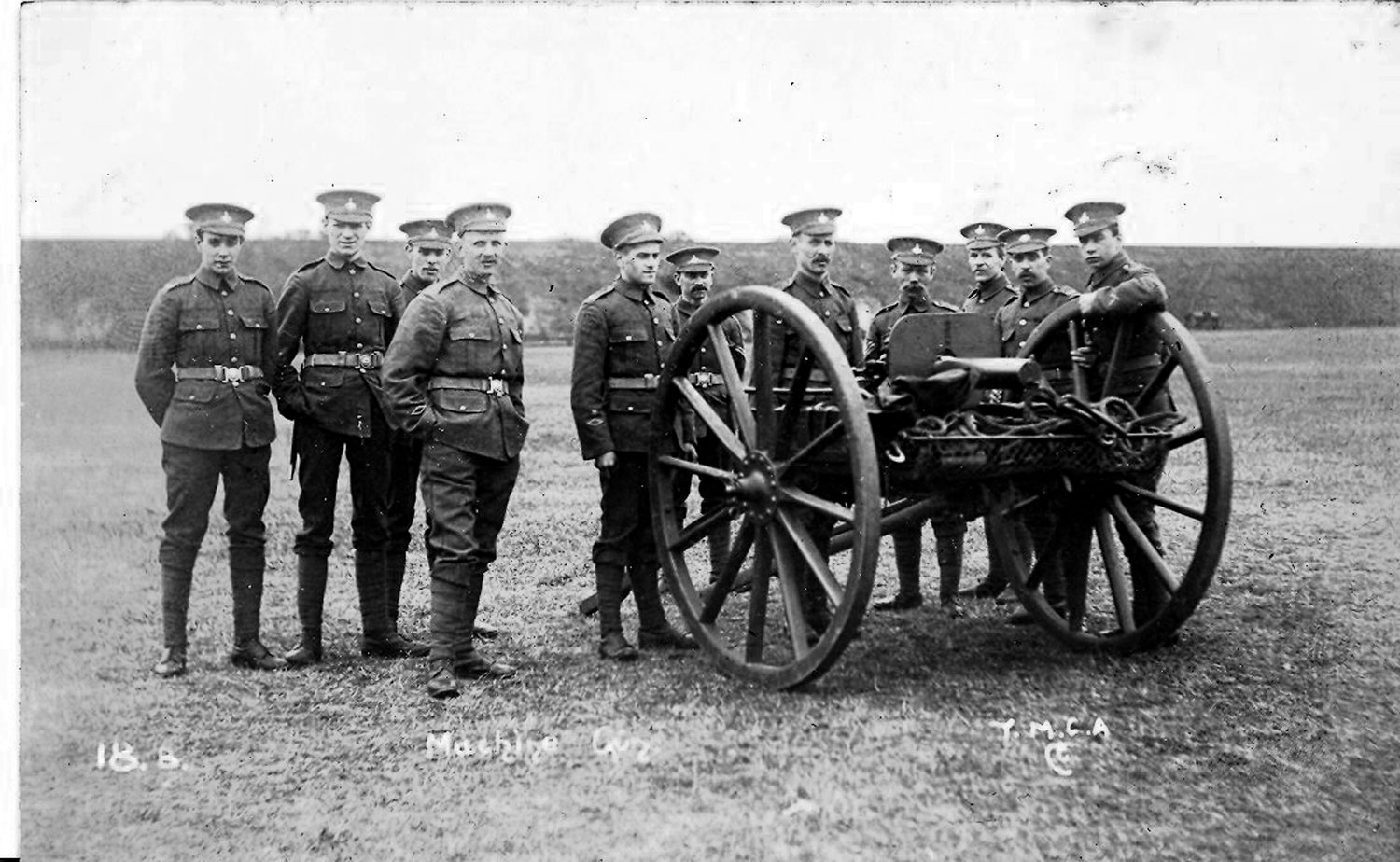
-
New Armies
-
6th (Service) EAST YORKSHIRE Battalion (Pioneers). Formed at Beverley on 27 August 1914. Came under orders of 32nd Brigade, 11th (Northern) Division. December 1914 : became the Pioneer Battalion to the Division. 1 July 1915: sailed from Avonmouth for Gallipoli via Mudros and landed at Suvla Bay 7 August 1915. 10 July 1916 : landed at Marseilles. Here are more details.
-
27.08.1914 Formed at Beverley, Yorkshire as part of the First New Army (K1) in the 32nd Brigade of the 11th Division, then moved to Grantham.
Dec 1914 Became a Pioneer Battalion.
April 1915 Moved to Witley Camp Godalming.
01.07.1915 Mobilised for war and embarked for Gallipoli from Avonmouth via Mudros.
07.08.1915 Landed at Suvla Bay and engaged in various actions against the Ottoman Empire.
17.12.1915 Evacuated to Mudros due to heavy casualties from combat, disease and severe weather.
04.02.1916 Moved to Alexandria to defend the Suez Canal.
10.07.1916 Moved to France landing at Marseilles and the Division engaged in various actions on the Western Front including;
During 1916
The capture of the Wundt-Werk, The Battle of Flers-Courcelette, The Battle of Thiepval.
During 1917
Operations on the Ancre, The Battle of Messines, The Battle of the Langemarck, The Battle of Polygon Wood, The Battle of Broodseinde, The Battle of Poelcapelle.
During 1918
The Battle of the Scarpe, The Battle of the Drocourt-Quant Line, The Battle of the Canal du Nord, The Battle of Cambrai 1918, The pursuit to the Selle, The Battle of the Sambre.
11.11.1918 Ended the war in France, Hergies north of Bavai. Below is a picture of the 6th EYR, training at Rugeley Camp, Cannock Chase, Staffordshire, 1916.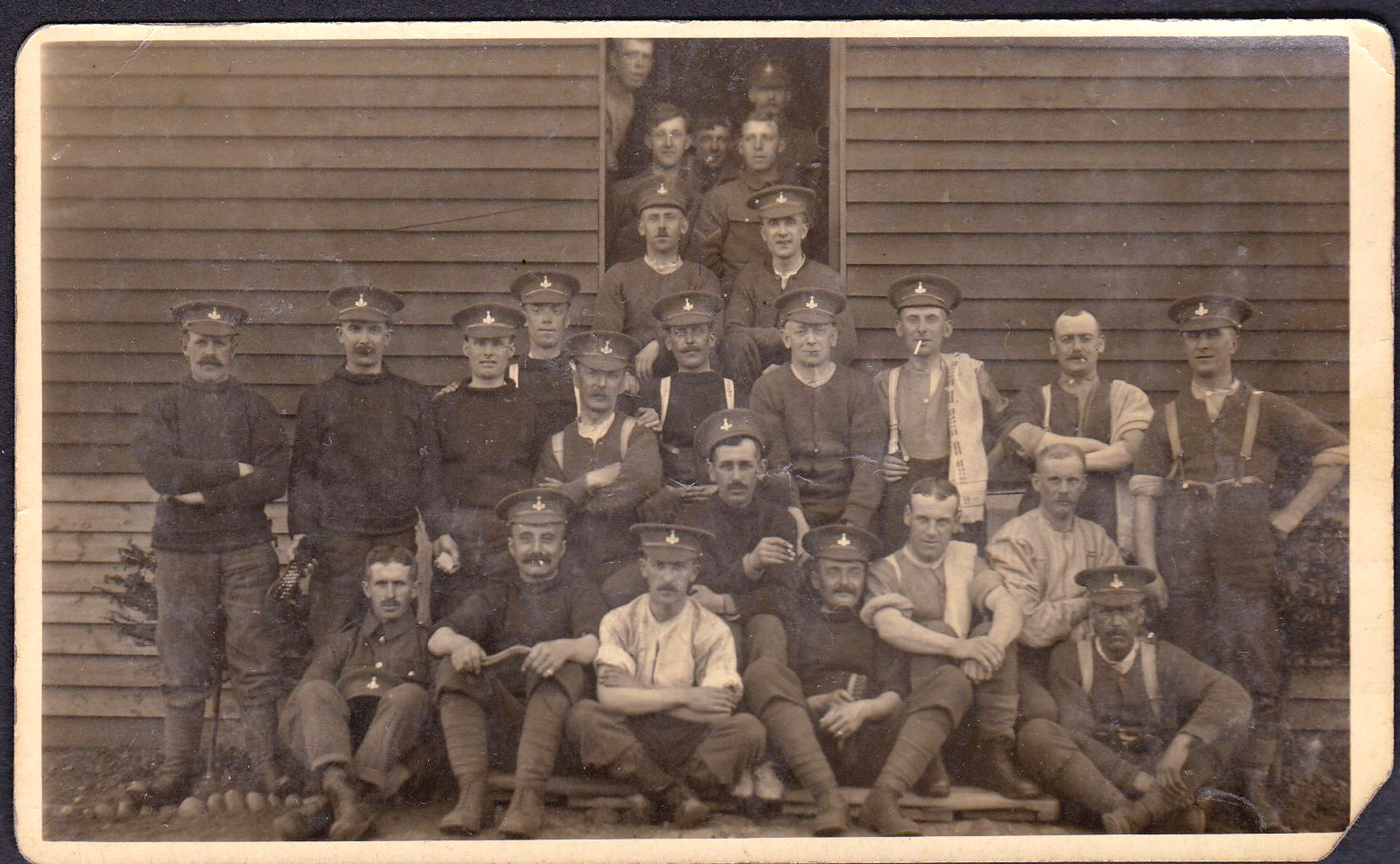
-
7th (Service) EAST YORKSHIR Battalion. 16.09.1914 Formed at Beverley, Yorkshire as part of the Second New Army (K2) in the 50th Brigade of the 17th Division, then moved to Wareham.
May 1915 Moved to Romsey.
14.07.1915 Mobilised for war and landed at Boulogne and engaged in various actions on the Western Front including;
During 1916
The Battle of Albert, The Battle of Delville Wood.
During 1917
The First and Second Battles of the Scarpe, The Capture of Roeux, The First and Second Battles of Passchendaele.
During 1918
The Battle of St Quentin, The Battle of Bapaume, The Battle of Amiens, The Battle of Albert, The Battle of Bapaume, The Battle of Havrincourt, The Battle of Epehy, The Battle of Cambrai 1918, The pursuit to the Selle, The Battle of the Selle, The Battle of the Sambre. 11.11.1918 Ended the war in France, Aulnoye. The 7th East Yorkshire had 1,062 men killed in the war. Below is a picture of teh 7th EYR band, post July 1916.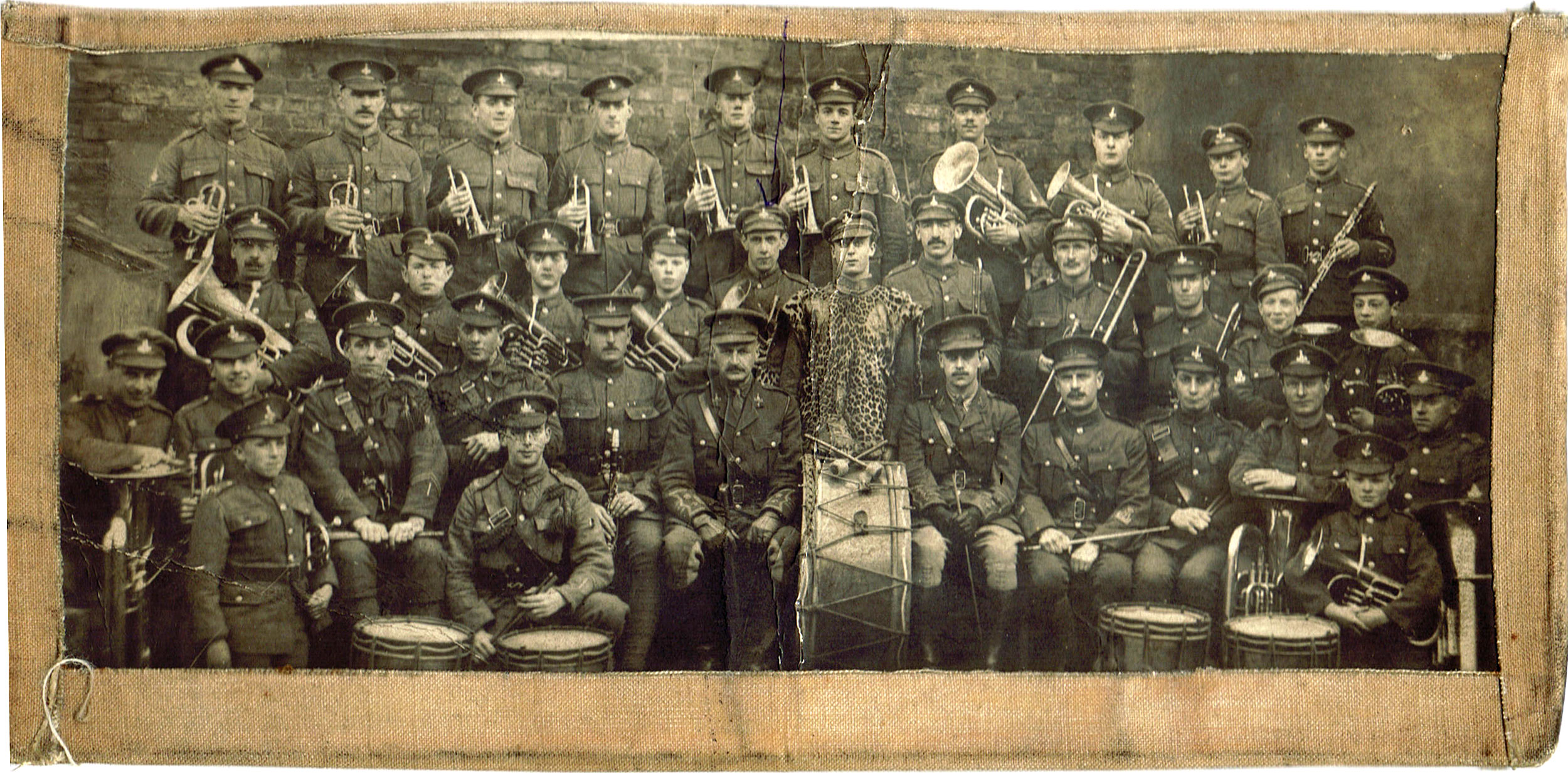
-
8th (Service) EAST YORKSHIRE Battalion. Formed at Beverley on 22 September 1914. Came under orders of 62nd Brigade, 21st Division. 9 September 1915 : landed at Boulogne. 16 November 1915 : transferred to 8th Brigade, 3rd Division. 17 February 1918 : disbanded in France. Troops formed 10th Entrenching Bn with men from the 12th West Yorks.
-
22.09.1914 Formed at Beverley, Yorkshire as part of the Third New Army (K3) in the 62nd Brigade of the 21st Division, then moved to Tring.
Aug 1915 Moved to Witley Camp, Godalming.
09.09.1915 Mobilised for war and landed at Boulogne and engaged in various actions on the Western Front including; The Battle of Loos.
16.11.1915 Transferred to the 8th Brigade of the 3rd Division which engaged in various actions on the Western Front including;
During 1916
The Actions of the Bluff and St Eloi Craters, The Battle of Albert, The Battle of Bazentin, The Battle of Delville Wood, The Battle of the Ancre.
During 1917
The First, Second and Third Battles of the Scarpe, The Battle of Arleux, The Battle of the Menin Road, The Battle of Polygon Wood, The Battle of Cambrai 1917.
17.02.1918 Disbanded in France, remaining personnel formed the 10th Entrenching Battalion with the 12th West Yorkshire Battalion. During its service, 8th EYR had lost 706 other ranks dead. Below is a picture of the 8th EYR Platoon.
-
9th (Reserve) EAST YORKSHIRE Battalion. Formed in York on 9 November 1914. Formed in York on 9 November 1914 as a Service battalion, coming under orders of 90th Brigade, original 30th Division. 10 April 1915: became a Reserve Battalion. Moved in May 1915 to Harrogate and in September of that year to Rugeley Camp, Cannock Chase. On 1 September 1916: converted into 7th Training Reserve Battalion in 2nd Reserve Brigade. 09.11.1914 Formed as a service battalion of the Fourth New Army (K4) at York in the 90th Brigade of the 30th Division.
10.04.1915 Became the second reserve battalion in the 2nd Reserve brigade.
May 1915 Moved to Harrogate and then on to Rugeley, Cannock Chase.
01.09.1916 Became the 7th Training Reserve Battalion. Below is a picture of the 9th EYR Sergeant’s Mess, 1915.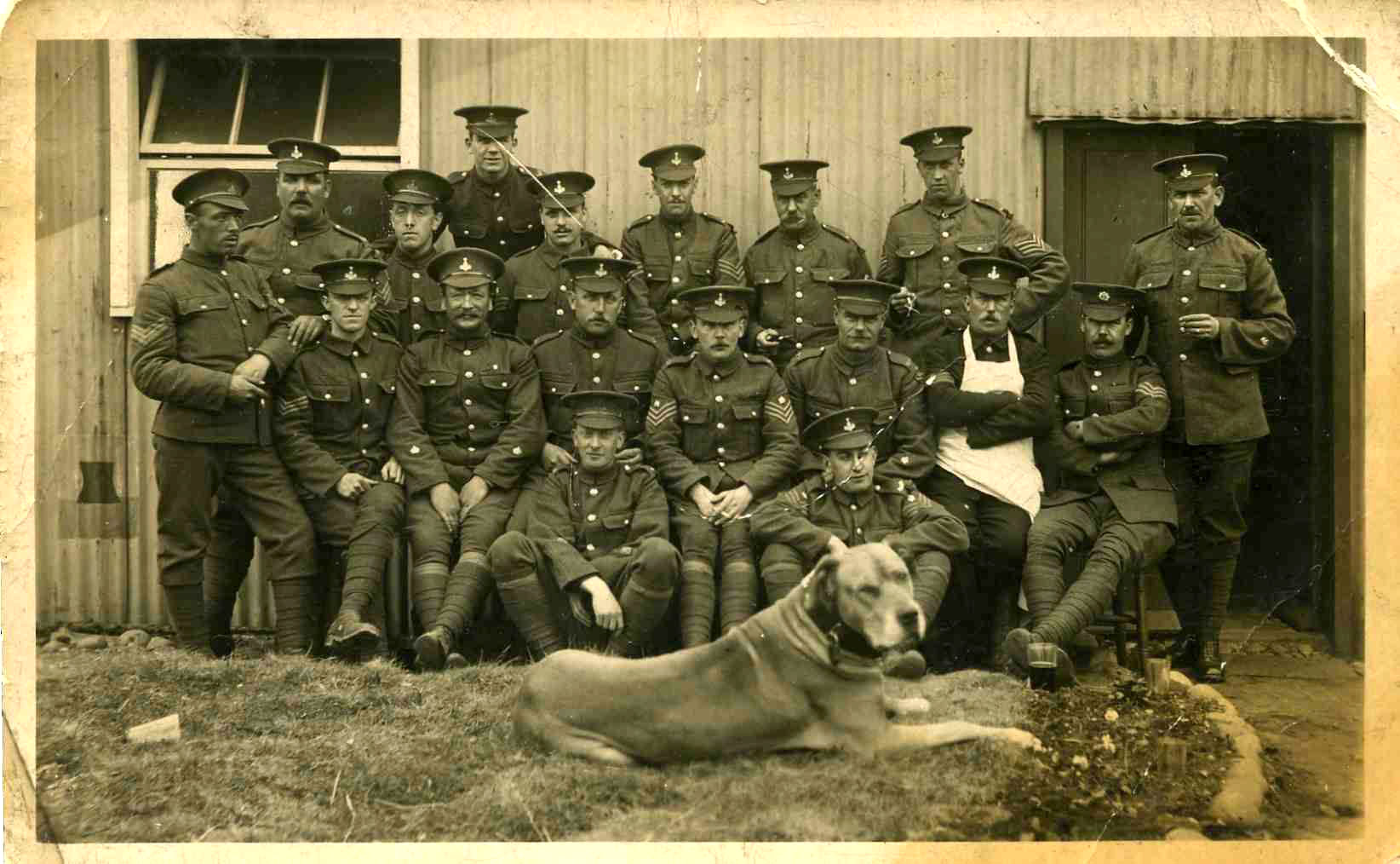
-
10th EAST YORKSHIRE (1st Hull Pals) Battalion (Hull Commercials). Formed in Hull on 29 August 1914 by Lord Nunburnholme and the East Riding TF Association. Commonly known as the Hull Commercials Battalion. June 1915 : came under orders of 92nd Brigade, 31st Division. 15 December 1915 : moved to Egypt. Went on to France in March 1916.
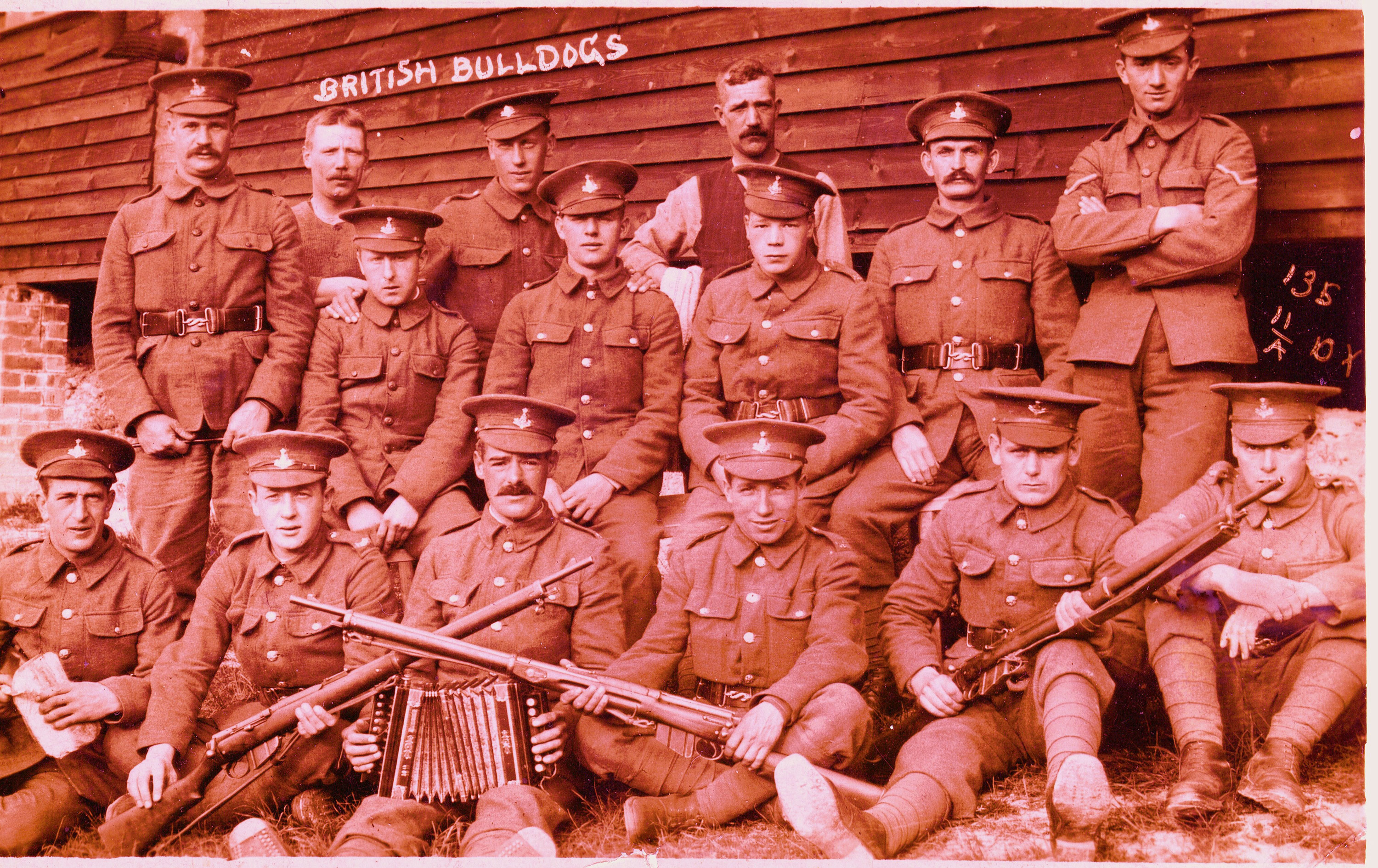
-
02.09.1914 The 11th formed and the 10th formed on 29.08.1914 both by Lord Nunburnholme and the East Riding Territorial Force Association at Hull, then moved to Hornsea.
June 1915 – Both moved to Ripon and joined the 92nd Brigade of the 31st Division.
01.09.1915 – The 11th taken over by the War Office and the 10th on 11.09.1914 and then both moved to Salisbury Plain.
15.12.1915 Mobilised for war and embarked for Egypt from Devonport, Plymouth.
30.12.1915 Arrived in Port Said to defend the Suez Canal.
Mar 1916 Moved to France and the Division engaged in various actions on the Western Front including;
During 1916
The Battle of Albert, The Battle of the Ancre.
During 1917
Operations on the Ancre, The Third Battle of the Scarpe, The Capture of Oppy Wood.
During 1918
The Battle of St Quentin, The Battle of Bapaume, The First Battle of Arras, The Battle of Estaires, The Battle of Hazebrouck, The Defence of Nieppe Forest, The attack at La Becque, The capture of Vieux Berquin, The Battle of Ypres, The action of Tieghem.
11.11.1918 The 10th ended the war in Belgium, near Flobecq east of Renaix. The 10th EYR lost 36 Officer and 574 men in the war, with 69 killed at Oppy Wood on 3rd May 1917.
-
11th EAST YORKSHIRE (2nd Hull Pals) Battalion (Hull Tradesmen). Formed in Hull on 2 September 1914 by Lord Nunburnholme. In June 1915 : came under orders of 92nd Brigade, 31st Division. 15 December 1915 : moved to Egypt. Went on to France in March 1916.
-
02.09.1914 The 11th formed and the 10th formed on 29.08.1914 both by Lord Nunburnholme and the East Riding Territorial Force Association at Hull, then moved to Hornsea.
June 1915 Both moved to Ripon and joined the 92nd Brigade of the 31st Division.
01.09.1915 The 11th taken over by the War Office and the 10th on 11.09.1914 and then both moved to Salisbury Plain.
15.12.1915 Mobilised for war and embarked for Egypt from Devonport, Plymouth.
30.12.1915 Arrived in Port Said to defend the Suez Canal.
Mar 1916 Moved to France and the Division engaged in various actions on the Western Front including;
During 1916
The Battle of Albert, The Battle of the Ancre.
During 1917
Operations on the Ancre, The Third Battle of the Scarpe, The Capture of Oppy Wood.
During 1918
The Battle of St Quentin, The Battle of Bapaume, The First Battle of Arras, The Battle of Estaires, The Battle of Hazebrouck, The Defence of Nieppe Forest, The attack at La Becque, The capture of Vieux Berquin, The Battle of Ypres, The action of Tieghem.
11.11.1918 The 10th ended the war in Belgium, near Flobecq east of Renaix. The 11th EYR lost 36 Officers, and 563 men, with 56 killed at Oppy Wood om 3rd May 1917.
-
12th EAST YORKSHIRE (3rd Hull Pals) Battalion (Hull Sportsmen). Formed in Hull on 11 August 1914 by Lord Nunburnholme and the East Riding TF Association. Commonly known as the Hull Sportsmen’s Battalion. In June 1915 : came under orders of 92nd Brigade, 31st Division. 15 December 1915 : moved to Egypt. Went on to France in March 1916. On 8 February 1918 : disbanded in France.
-
03.11.1914 The 13th formed and on the 11.08.1914 The 12th formed, both by Lord Nunburnholme and the East Riding Territorial Force Association at Hull, then moved to Hornsea.
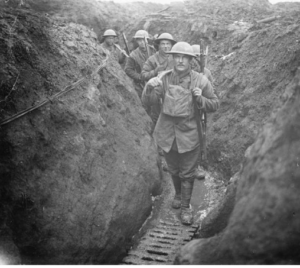
12th EYR Wiring Party, Roclincourt, France, January 1918 June 1915 Both moved to Ripon and joined the 92nd Brigade of the 31st Division.
01.09.1915 The 12th taken over by the War Office and then on the 27.08.1915 the 13th and then both moved to Salisbury Plain.
15.12.1915 Mobilised for war and embarked for Egypt from Devonport, Plymouth.
30.12.1915 Arrived in Port Said to defend the Suez Canal.
Mar 1916 Moved to France and the Division engaged in various actions on the Western Front including;
During 1916
The Battle of Albert, The Battle of the Ancre.
During 1917
Operations on the Ancre, The Third Battle of the Scarpe, The Capture of Oppy Wood.
08.02.1918 The 13th disbanded in France at Ecurie.
During 1918
The Battle of St Quentin, The Battle of Bapaume, The First Battle of Arras, The Battle of Estaires, The Battle of Hazebrouck, The Defence of Nieppe Forest, The attack at La Becque, The capture of Vieux Berquin, The Battle of Ypres, The action of Tieghem.
11.11.1918 The 10th ended the war in Belgium, near Flobecq east of Renaix. The 12th EYR lost 24 Officers, and 366 men, with 106 killed at Serre, on 13th November 1916.
-
13th EAST YORKSHIRE (4th Hull Pals) Battalion (Hull T’Others). Formed in Hull on 11 August 1914 by Lord Nunburnholme and the East Riding TF Association. Commonly known as the “T’Others”, June 1915 : came under orders of 92nd Brigade, 31st Division. 15 December 1915 : moved to Egypt. Went on to France in March 1916. On 8 February 1918 : disbanded in France.
-
03.11.1914 The 13th formed and on the 11.08.1914 The 12th formed, both by Lord Nunburnholme and the East Riding Territorial Force Association at Hull, then moved to Hornsea.
June 1915 Both moved to Ripon and joined the 92nd Brigade of the 31st Division.
01.09.1915 The 12th taken over by the War Office and then on the 27.08.1915 the 13th and then both moved to Salisbury Plain.
15.12.1915 Mobilised for war and embarked for Egypt from Devonport, Plymouth.
30.12.1915 Arrived in Port Said to defend the Suez Canal.
Mar 1916 Moved to France and the Division engaged in various actions on the Western Front including;
During 1916
The Battle of Albert, The Battle of the Ancre.
During 1917
Operations on the Ancre, The Third Battle of the Scarpe, The Capture of Oppy Wood.
08.02.1918 The 13th disbanded in France at Ecurie.
During 1918
The Battle of St Quentin, The Battle of Bapaume, The First Battle of Arras, The Battle of Estaires, The Battle of Hazebrouck, The Defence of Nieppe Forest, The attack at La Becque, The capture of Vieux Berquin, The Battle of Ypres, The action of Tieghem.
11.11.1918 The 10th ended the war in Belgium, near Flobecq east of Renaix. The 13th EYR lost 21 Officers and 293 men, with 138 killed at Serre, on 13th November 1916.
-
14th EAST YORKSHIRE (Reserve) Battalion. Formed in Lichfield in August 1915 as a Reserve battalion. Formed from the depot companies of the 10th 11th 12th and 13th Battalions as a local reserve battalion at Lichfield, moved to Clipstone. April 1916 Moved to Seaton Delaval.
01.09.1916 Became the 90th Training Reserve Battalion in the 21st Reserve Brigade. -
15th EAST YORKSHIRE (Reserve) Battalion. Formed at Seaton Delaval in February 1916 by the 14th Bn. as local Reserve.
1 September 1916 : absorbed by 15th Bn York & Lancs, and became 91st Training Reserve Battalion of 21st Reserve Brigade. Feb 1916 Formed from the 14th Battalion at Seaton Delaval.
01.09.1916 Absorbed into the 15th York & Lancs. Regiment which formed the 91st Training Reserve Battalion in the 21st Reserve Brigade. -
17th NORTHUMBERLAND FUSILIER (Transport Workers) Battalion, Formed in Hull Docks. Known as the ‘Railway Pals’. Sept 1914 Formed at Hull by the North Eastern Railway.
11.01.1915 Became a Pioneer Battalion.
June 1915 Moved to Catterick and joined the 32nd Division then moved to Codford St. Mary.
01.09.1915 Taken over by the War Office.
21.11.1915 Mobilised for war and landed at Havre and engaged in various actions on the Western Front including;
1916
The Battle of Albert, The Battle of Bazentin, The Battle of the Ancre.
19.10.1916 Transferred to G.H.Q. Railway Construction Troops.
02.09.1917 Rejoined the 32nd Division at Ghyvelde.
15.11.1917 Transferred to G.H.Q. Railway Construction again.
31.05.1918 Transferred to 52nd Division as Pioneer Battalion.
The Battle of Albert, The Battle of the Scarpe, The Battle of the Drocourt-Queant Line, The Battle of the Canal du Nord, The Final Advance in Artois.
11.11.1918 Ended the war in Sirault N.W. of Mons, Belgium. -
1st EAST RIDING Garrison Battalion. Formed in Sheffield in October 1915. Moved to Lichfield, in November 1915 and in February 1916 went to India. Joined Allahabad Brigade in 8th (Lucknow) Division. Moved to Lucknow Brigade in same Division in March 1918.
-
2nd EAST RIDING (Home Service) Garrison Battalion. Formed in Hull in April 1916. In August 1917 was converted into 8th Battalion of Royal Defence Corps.
The links below provide more information of these Battalions and some stories of the men who served with the East Yorkshire Regiment.
East Yorkshire Officers – https://www.westernfrontassociation.com/world-war-i-articles/a-bloody-war-or-a-sickly-season-the-east-yorkshire-regiment-s-regular-officers-of-august-1914-and-the-great-war/
Soldiers Stories http://www.wartimememoriesproject.com/greatwar/allied/eastyorkshireregiment.php#ebullock
The East Yorkshire Regiment Battalions http://www.1914-1918.net/eastyorks.htm
What was an Infantry Battalion? – http://www.1914-1918.net/whatbatt.htm